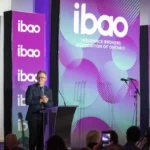
Overcoming the challenges presented by the pandemic has required no small degree of creativity. Businesses have had to pivot their business models, come up with new marketing strategies and rework their image to stay relevant and competitive. Unfortunately, many people dismiss their own capacity for creativity, saying things like I’m not a creative type. The good news is, they’re wrong.
CREATIVITY IS FOR EVERYONE
There’s a common misconception about creativity that it’s innate to some people and inaccessible to others. But creativity is less like an inborn trait and more like a skill that can be developed—it’s less like height and more like fitness. In Allen Gannett’s The Creativity Curve, he describes how even people we think of as creative geniuses like Paul McCartney or Steve Jobs are just people who’ve dedicated a lot of their time, thought and energy to their specific field. Great artists are almost always fans first.
In Greek mythology, creative insight came courtesy of the Muses. However even then, these sister goddesses were the offspring of Zeus and Mnemosyne, who is the personification of memory. Even this ancient model of divine inspiration acknowledges that ideas are forged from remembering what had come before.
Gannett’s advice is if you want to be more creative, you have to consume as much content from your field as you can. In business, this might entail reading publications like Fast Company or Inc. or researching and studying businesses you admire. Looking at the ways others have done things before you gives you the raw materials you’ll need to come up with new ideas of your own.
SO START CREATING
Another popular misconception is that being creative requires you to create something from nothing. But most creativity isn’t Keith Richards coming up with the riff for Satisfaction in his sleep. All it takes to create new ideas is to combine previously existing ideas. If that seems abstract, just look at the most pervasive content of our time—the meme. Memes are simply an image, often from a movie or tv show, with a second idea applied to create new meaning.
If you’re trying to come up with a creative solution to a problem, first think of one way someone has approached the problem before, then mentally cycle through a list of potential secondary ideas you can mash it up with to create a novel idea.
Regularly practicing creativity in whatever form you choose will make you better at it. A simple exercise suggested by Julia Cameron in The Artist’s Way is something she calls Morning Pages. Every morning when you wake up, write two or three pages longhand. That’s it. Write whatever you want, following your stream of consciousness. By getting in the habit of uncritically putting your ideas down on paper, you’re building the muscle to be able to create more deliberately when you want to.
DON’T WORRY IF IT’S GOOD OR NOT
It’s called the creative process because that’s what it is—a process. Success and failure aren’t the binary outcomes of trying something, they’re necessary steps in ongoing development. To paraphrase an old saying, there’s no such thing as good writing, only good rewriting—and this applies to any form of creativity. To get any ideas of value, you need to iterate a lot. Much of it won’t be good, but it’ll get you closer to finding something good. Before finally perfecting his revolutionary vacuum, James Dyson spent 15 years building over 5,000 prototypes of it.
Once you’ve tried something, learning to view it critically so you can productively move forward from it is key. In Black Box Thinking, author Matthew Syed suggests that being able to do this is ultimately what allows organizations to survive in the long term. He points to the aviation industry as being especially good at this. After every crash, there’s an investigation. Processes are refined and improved. Now, flying is safer than it’s ever been.
If you come up with a new initiative for your business and it doesn’t work out, that’s okay. Catalogue the knowledge and resources you might have now that you didn’t before and ask yourself what else you can do with them that might work better, while avoiding the problem you ran into.
GET OTHERS INVOLVED
Another popular misconception is that being creative requires you to create something from nothing. But most creativity isn’t Keith Richards coming up with the riff for Satisfaction in his sleep. All it takes to create new ideas is to combine previously existing ideas. If that seems abstract, just look at the most pervasive content of our time—the meme. Memes are simply an image, often from a movie or tv show, with a second idea applied to create new meaning.
If you’re trying to come up with a creative solution to a problem, first think of one way someone has approached the problem before, then mentally cycle through a list of potential secondary ideas you can mash it up with to create a novel idea.
Regularly practicing creativity in whatever form you choose will make you better at it. A simple exercise suggested by Julia Cameron in The Artist’s Way is something she calls Morning Pages. Every morning when you wake up, write two or three pages longhand. That’s it. Write whatever you want, following your stream of consciousness. By getting in the habit of uncritically putting your ideas down on paper, you’re building the muscle to be able to create more deliberately when you want to.
DON’T WORRY IF IT’S GOOD OR NOT
Learning to harness your creativity can be powerful. Now imagine if everyone at your company did the same thing. We’ve talked about elevating your next brainstorming session by hosting a Design Thinking Workshop (October 2019). A component to keep in mind for group creativity sessions is trying to bring diversity into the room. That’s diversity in all senses—seniority level, department, age, gender, race, etc. The more diverse the group, the more diverse the skill sets and life experiences can be leveraged to generate a more diverse set of solutions.
Homogeneity can be a real hinderance to a group’s ability to solve certain problems. When Astronaut Sally Ride was preparing to become the first American woman in space, NASA scientists asked how many tampons she’d need for the seven-day journey—was 100 enough? Based on the nature of this error, you guess what composition that room was. And they were literally rocket scientists.
In another of Matthew Syed’s books, Rebel Ideas, he explores how diversity in groups is the engine to success. This includes hearing people out when they have different world views, which is why Design Thinking workshops are designed so everyone’s voices and ideas are given equal opportunity. Those with the loudest voices don’t automatically have the best ideas, so ensuring your environment is one where anyone can be heard will make sure good ideas aren’t being drown out.
SEE WHAT YOU COME UP WITH
Honing creative skills in yourself and your teams can give you an advantage anytime, but with the current, constantly shifting landscape, it could be what gets you through. Not to mention, it can also be hugely rewarding. The first step is realizing that you can be creative, and if you’ve read this far, you’re probably already there.



